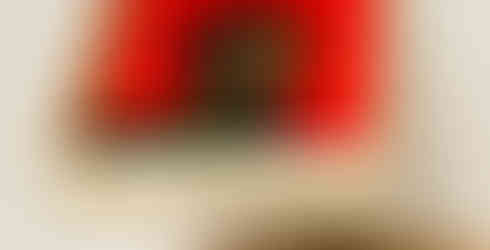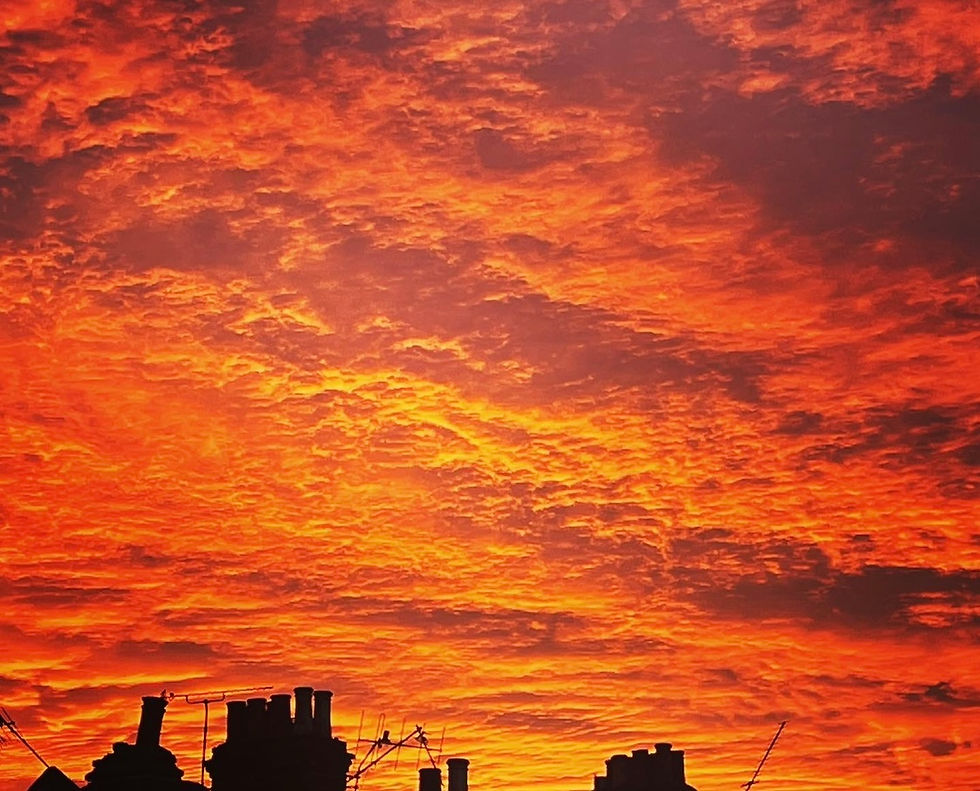Step inside Lubaina Himid’s theatrical world
- anne

- Jan 6, 2022
- 4 min read
Updated: Jan 7, 2022

Before entering the exhibition in the Blavatnik building, you are greeted by a series of colourful banners depicting internal parts of the human body: an eyeball asks ‘why are you looking’, an open-heart declares ‘so many dreams’. You walk on through a bright pink corridor - and you’re in.

The first thing I noticed instead of the usual blurb contextualising the content and some background about the artist, there was a question – the first of many:
WE LIVE IN
CLOTHES,
WE LIVE IN BUILDINGS
-
DO THEY
FIT US?
In some kind of theatrical twist, audiences become performers and Lubaina Himid challenges us to consider our agency - to be active bystanders. The exhibition turns into ‘a stage for considering the personal and the political.’ I’m liking this. Even if the first room feels like a bit of an odd mix - that I don’t fully get my head around – it’s thought provoking and provocative all at once, and it doesn’t take long for the ice to break. Stay with it - you’re in for a treat.
Setting the stage

Born in Zanzibar in 1954, Lubaina Himid moved to London with her British mother aged 4 months, after her father, who was from Zanzibar, died of malaria soon after her birth.
She has devoted her career – spanning four decades - to uncovering marginalised and silenced histories and, like Rita Keegan or Chila Kumari Singh Burman amongst others, was a pivotal figure in the Black British Arts movement of the 1980s. Her work continues to explore issues around class, race, gender and history, providing critical reflections about people of colour’s lived experiences in Britain. She won the Turner Prize in 2017, fairly late in her career – at once becoming the first black woman and the oldest-ever artist to win it. The retrospective at the Tate Modern (ends 03 July 22), is the largest show of her work to date.

WHAT DOES LOVE SOUND LIKE?
In addition to the striking bright canvasses, she has become known for, Himid produces sonic works, exploring the physicality of sound – of what we may not see, but feel – they surge throughout the exhibition in very powerful and dynamic ways that really bring the theatricality of her work to life. A Fashionable Marriage – an installation that revises Hogarth’s Marriage A-la-Mode: The Toilette – a satirical painting about the moral corruption of the elite in 1700s. Take a close look at the second part of the room which depicts the 1980s (far) right political landscape she lived through in this country. And of course, Naming the Money, in which Himid narrates stories about the lives of 100 African slaves / servants – their former free lives and current positions in European households – attesting to Black creativity and presence across history. Sadly, however, the life-size figures are missing.
HOW DO YOU
DISTINGUISH
SAFETY
FROM
DANGER?
The sea is a recurring theme in Lubaina Himid’s work. As someone with a particular love - and respect - for the sea … I was confronted with my personal associations - beach fun, swims, splish-splash, the infinite sense of freedom and sometimes … fear, but as a protagonist in this exhibition, I felt compelled to re-examine these connotations against the background of the works in front of me – of the sea as danger, displacement and death. Not least with Old Boat/New Money (below) an installation of 32 leaning wooden planks in varying shades of grey. The ship-like arrangement and the painted cowry shells evoke histories of the transatlantic slave trade, and more broadly the invisible legacies of colonial exploitation that remain inscribed in art and architecture.
Particularly chilling is her more recent Le Rodeur series – about the infamous French ship which sailed with captured West Africans to Guadeloupe, in 1819. 162 enslaved men, women and children went blind en route with an untreatable eye disease. The captain had 36 people thrown overboard in order to claim the insurance.
Pause.
But instead of painting hundreds of people in great distress and dying, Lubaina Himid translates this atrocious - and unrepresentable – tale into a sequence of images in which she transposes the enslaved people’s lives to the present, conveying the sense of absolute inability to understand what was happening.

… WHAT HAPPENS NEXT?
There was so much I liked – but as I write, I realise there is also so much I missed. Thinking about her life through her art I couldn’t help but note the Six Tailors / Close Up – Materials for Change - the detailed fabric weave as a reference to her mother, who was a textile designer - also reminded me of mine. And what about the young men painted in drawers - like pieces of second-hand shop furniture. You are literally forced to lean over to see the painting – and wonder: who is or not seen in art. And the incredible tour de force that is Freedom and Change – such a brilliant retort to Picasso’s white centric Women Running on the Beach – I simply love her refreshing audacity in changing the narrative by replacing his two original females with two allegorised women of colour.
And it doesn’t end there! So much to ponder, examine, uncover, reflect …. and interpret. Take the time to let it percolate, allow yourself to participate in Lubaina Himid’s astoundingly vibrant and evocative works and worlds … I just want to go again.
But until then, I'm enjoying getting to know her and her work better. I recommend listening to the episode of Desert Island Disc where she talks about her life and In Conversation with Maria Balshaw on Tate Talks, which is more focused on her work.
Practical info
Tate Modern Gallery
Bankside, London SE1 9TG
Opening Times
Sunday to Thursday 10.00–18.00 and Friday to Saturday 10.00–22.00
Getting there
By tube either from Southwark station (Jubilee line), Blackfriars (District and Circle line) or St Paul’s (Central line)
Bus routes 45, 63, 100, 344, 381
The Tate Boat runs every 30 minutes between Tate Britain (Millbank Pier) and Tate Modern (Bankside Pier)
For more details visit: www.tate.org.uk/visit/tate-modern and for accessibility: www.tate.org.uk/visit/tate-modern/access-and-facilities












Comments